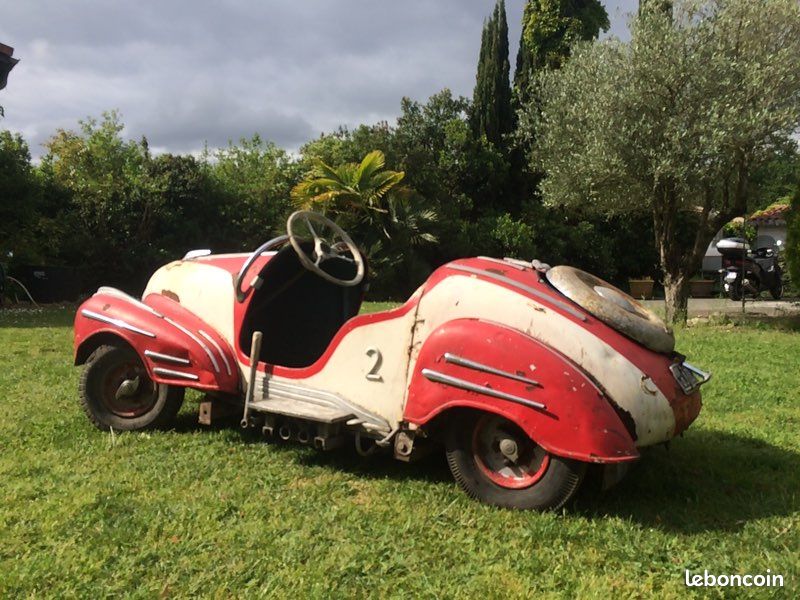Microcar et voitures électriques
5 participants
Page 2 sur 2
Page 2 sur 2 •  1, 2
1, 2
 Re: Microcar et voitures électriques
Re: Microcar et voitures électriques
_________________
We don't care the People Says , Rock 'n' roll is here to stay - Danny & the Juniors - 1958
 Daihatsu Bee, 1951
Daihatsu Bee, 1951
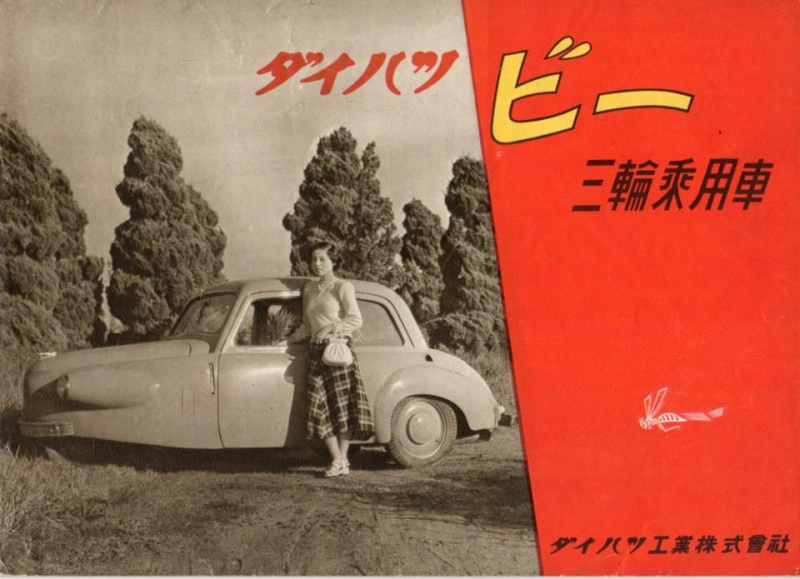
The Daihatsu Bee is a three-wheeled microcar produced by the Japanese manufactuer Daihatsu from 1951
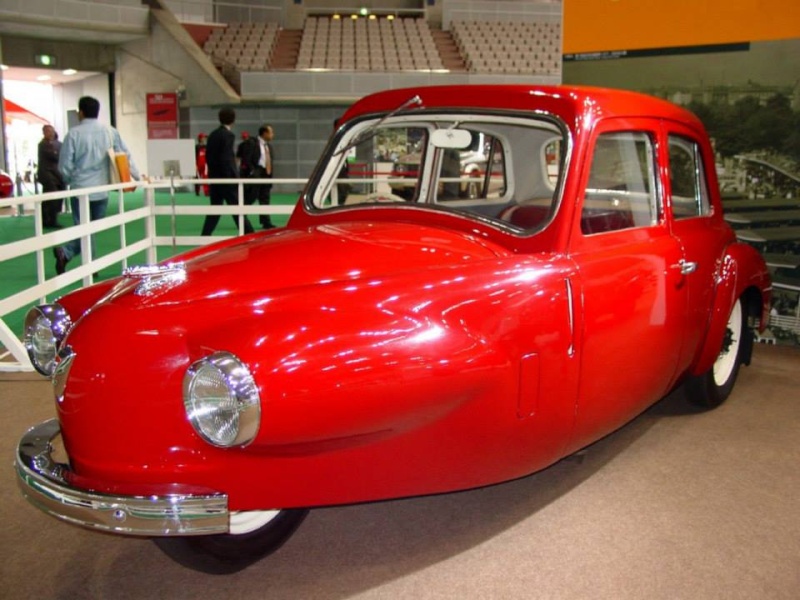
Although Daihatsu had been producing motorized tricycles for carrying freight since 1930, and had also produced a small car for military use in 1937, the Bee was the first passenger car the company built for sale to the general public. The car was marketed from October 1951, shortly before the company changed its name from 'Hatsudoki Seizo Co' to Daihatsu.

Photographs show the car with a two-door fibreglass body, though other sources state that it had a four-door body instead and as a result was popular as a taxi. Power was provided by a rear-mounted 540 cc OHV air-cooled two-cylinder four-stroke engine. It was the first car in Japan with a horizontally opposed engine.[1] The car was adapted from one of Daihatsu's three-wheeled delivery trucks. It sold very poorly, production was highly labor-intensive and ceased after only approximately 300 units were built
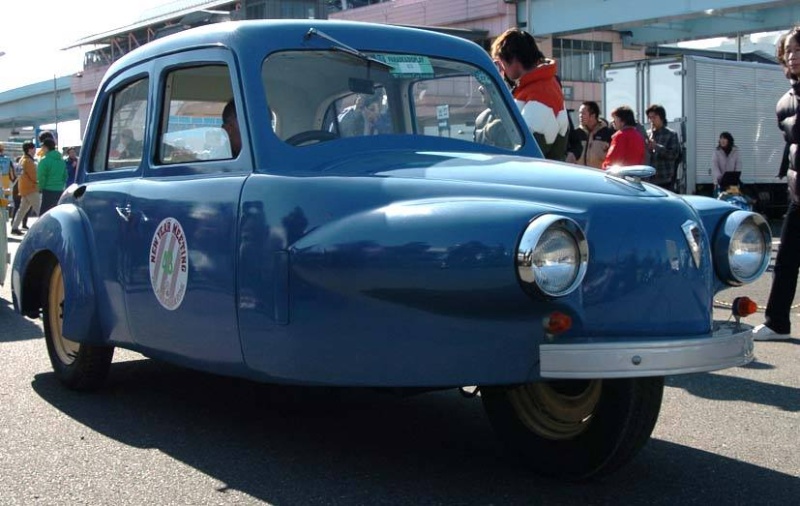

_________________
We don't care the People Says , Rock 'n' roll is here to stay - Danny & the Juniors - 1958
 Burgfalke FB250Export, Bavaria, Germany 1958
Burgfalke FB250Export, Bavaria, Germany 1958
1958 Burgfalke FB250 Export

Victoria wanted to have production facilities and inventories of the car
sold, but in the period of rising prosperity who wanted to still build a 250cc car?
Reportedly, the head of the firm: BURGFALKE,DAHMEN had tried aircraft and now wanted to be in the Automobile business.
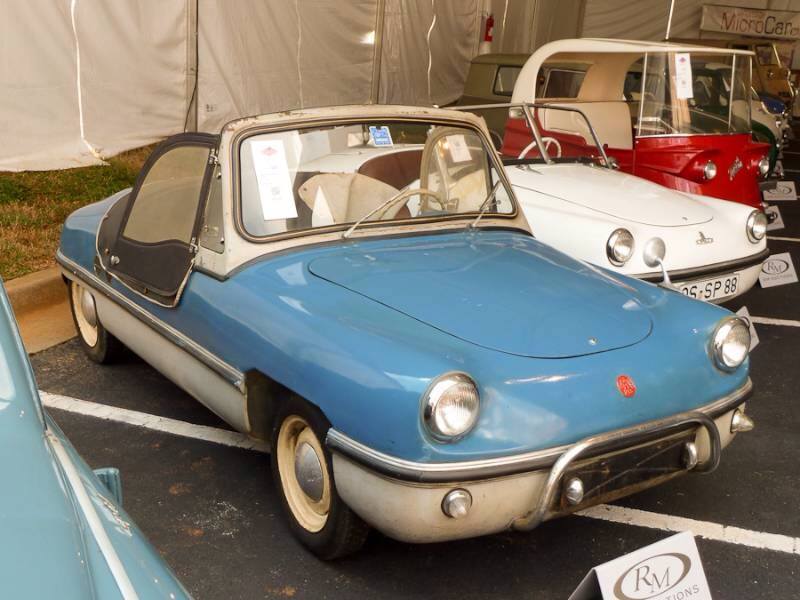
In Nürnberg, he said he wished to buy everything that belonged to the Victoria 250. He had purchased an old glass factory in Bavaria and here was where the car known as the "Burgfalke Export 250" would be built.

The press was told that future versions would have side doors and front and rear bumpers, a larger engine and so on.
But Burgfalke was having troubles paying for the remaining 180 Victoria Bodies and parts and production soon ceased after some handbuilt versions were made.
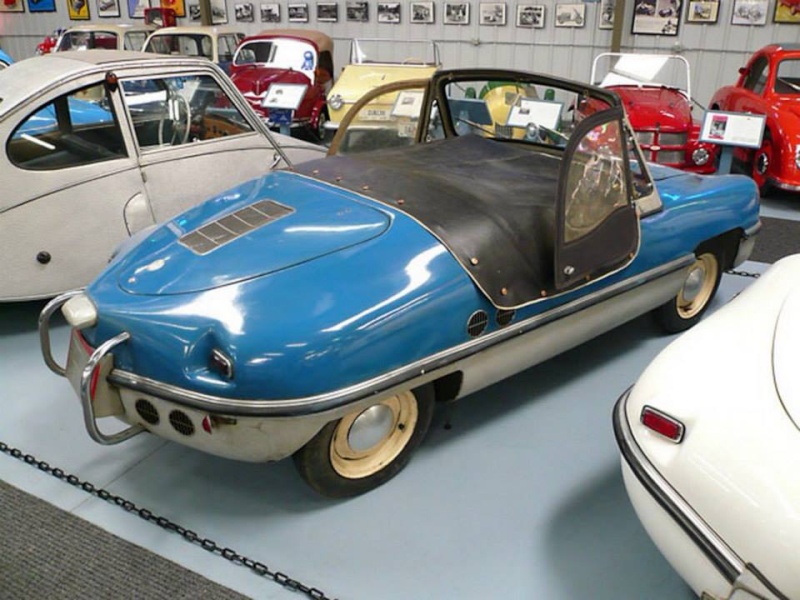
So few "Burgfalke Export 250s" were built that there is not an accurate account of the number that managed to emerge from the factory and books that chronicle the history of the Spatz and Victoria only mention Burgfalke as a footnote.

At least Two were originally shipped to the USA to dealers, this car is one of those.
It still has the original cloth top and packaging from the dealer under the front hood.

Manufacturer: Burgfalke Fahrzeugbau Bavaria Germany

Victoria wanted to have production facilities and inventories of the car
sold, but in the period of rising prosperity who wanted to still build a 250cc car?
Reportedly, the head of the firm: BURGFALKE,DAHMEN had tried aircraft and now wanted to be in the Automobile business.

In Nürnberg, he said he wished to buy everything that belonged to the Victoria 250. He had purchased an old glass factory in Bavaria and here was where the car known as the "Burgfalke Export 250" would be built.

The press was told that future versions would have side doors and front and rear bumpers, a larger engine and so on.
But Burgfalke was having troubles paying for the remaining 180 Victoria Bodies and parts and production soon ceased after some handbuilt versions were made.

So few "Burgfalke Export 250s" were built that there is not an accurate account of the number that managed to emerge from the factory and books that chronicle the history of the Spatz and Victoria only mention Burgfalke as a footnote.

At least Two were originally shipped to the USA to dealers, this car is one of those.
It still has the original cloth top and packaging from the dealer under the front hood.

Manufacturer: Burgfalke Fahrzeugbau Bavaria Germany
_________________
We don't care the People Says , Rock 'n' roll is here to stay - Danny & the Juniors - 1958
 Re: Microcar et voitures électriques
Re: Microcar et voitures électriques

Le Carabe (The Beetle) - France 1937
The French inventor Hippolyte Delimar built one of the world's smallest car from standard bicycle parts. The body of the closed car was made of wood. Le Carabe was 75 cm high, 73 cm wide and weighed only 45 kg. The bike engine reached a speed of 30-40 km/h and it made 100 kilometers per 2 liters of gasoline.


_________________
We don't care the People Says , Rock 'n' roll is here to stay - Danny & the Juniors - 1958
 American Austin Bantam (1937-1941)
American Austin Bantam (1937-1941)
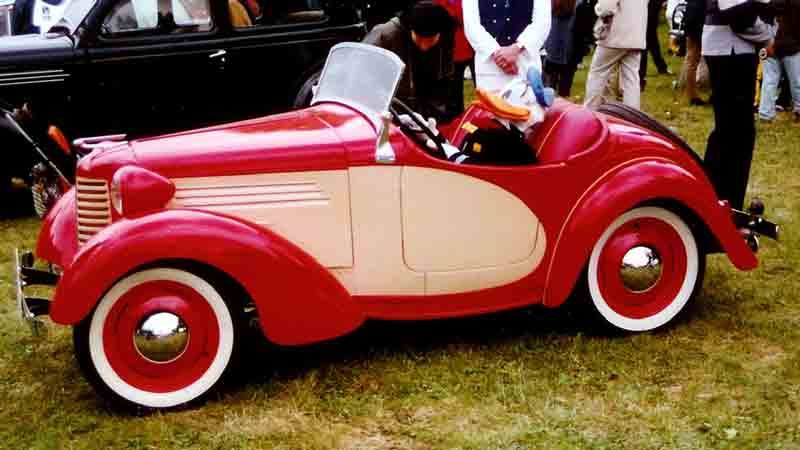
American Austin Bantam (1937-1941)
In 1935 Roy Evans, a former salesman for Austin, bought out the bankrupt company, which was reorganized under the name American Bantam. ("Bantam" is a smaller-bred version of any particular poultry breed — the name likely was chosen due to the size of the automobiles being produced.) The formal connection with UK Austin was severed, though a relationship was maintained. A series of changes was made to the American Austin car design, including a modified engine, and an exterior sheetmetal designed by Alexis de Sakhnoffsky.
Production was resumed in 1937 and continued through 1941. Despite a wide range of Bantam body styles, ranging from light trucks to woodie station wagons, only about 6,000 Bantams of all types were produced.
The 1938 American Bantam Roadster is famous for being the inspiration for Donald Duck's car, the Belchfire Runabout, also known by its license plate number, 313.
Read more: http://jalopnik.com/everything-you-urgently-need-to-know-about-donald-duck-1489747476

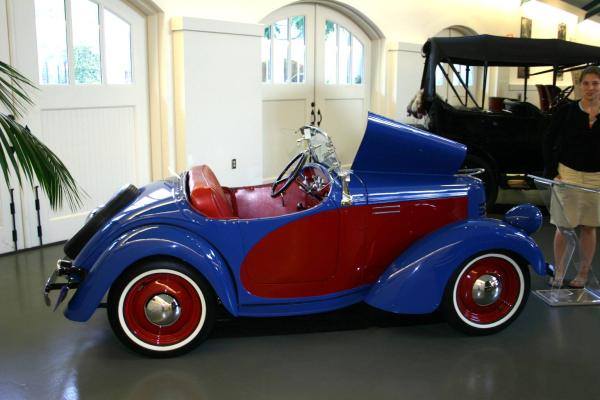

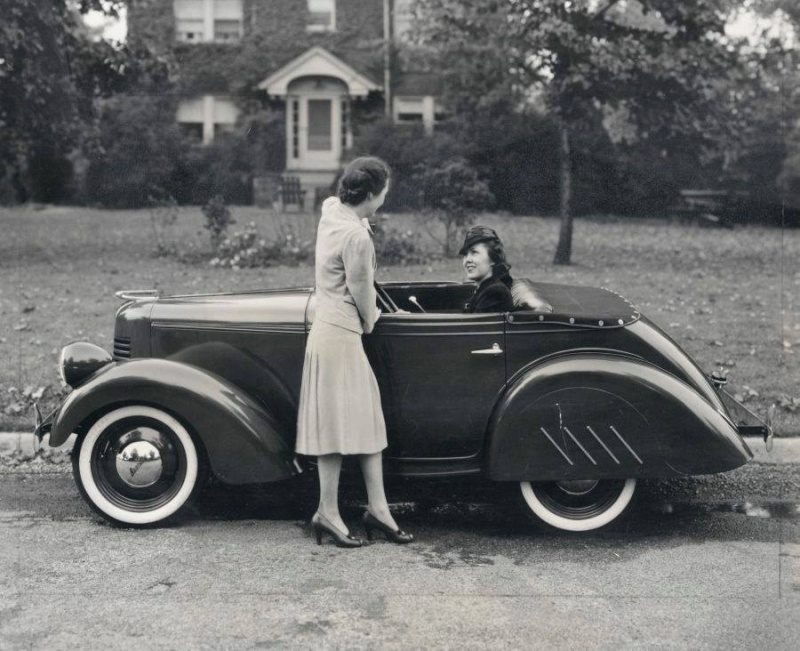
_________________
We don't care the People Says , Rock 'n' roll is here to stay - Danny & the Juniors - 1958
 Atlas "Babycar", aka "Coccinelle" (Ladybird), France 1949
Atlas "Babycar", aka "Coccinelle" (Ladybird), France 1949

Atlas "Babycar", aka "Coccinelle" (Ladybird), France 1949
The delightfully styled "Atlas" was one of a large number of vehicles that were produced in France after World War II. Marketed in France only, these cars were outside of mainstream European car production.
The car was introduced as the "Coccinelle" (Ladybird) at the "Paris Salon" in 1949. Afterwards called "Atlas Babycar", it was the product of the Societe Industrielle de Livry, with bodywork by Duriez in Paris. The same company also produced the Kover (a cheaper small roadster) and the stark Le Piaf (closely resembling the Biscooter), all of them using the same chassis.
The prototype was built in 1949, with the well-known 170cc AMC motor, making 8.5 horsepower. An Ilo 250cc engine and an electric starter were considered for its primarily female customers.
This is one of the only two examples known to exist.
http://www.microcarmuseum.com/tour/atlas.html


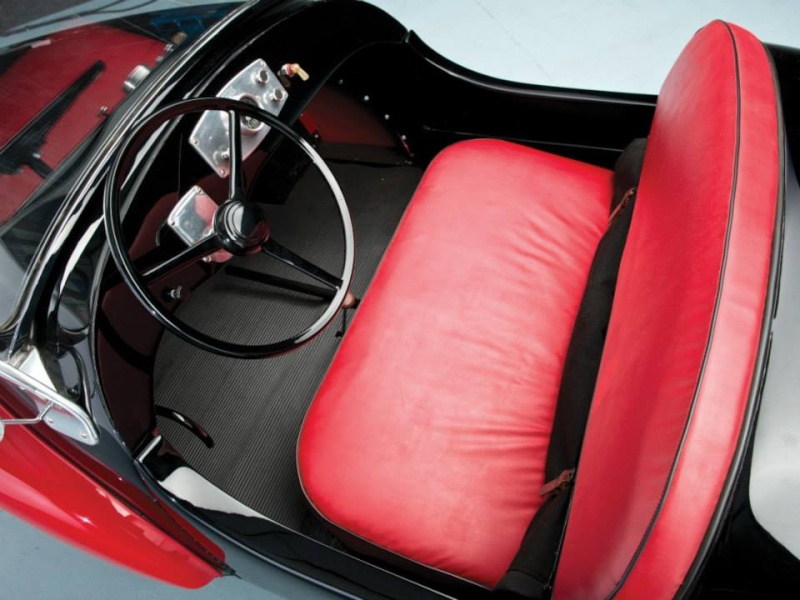

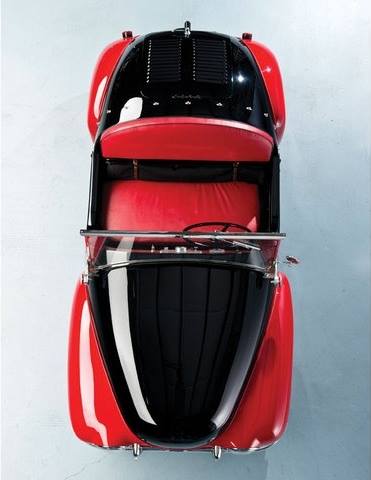
_________________
We don't care the People Says , Rock 'n' roll is here to stay - Danny & the Juniors - 1958
 Re: Microcar et voitures électriques
Re: Microcar et voitures électriques
_________________
We don't care the People Says , Rock 'n' roll is here to stay - Danny & the Juniors - 1958
 ihle schottenring 1952
ihle schottenring 1952
_________________
We don't care the People Says , Rock 'n' roll is here to stay - Danny & the Juniors - 1958
 Re: Microcar et voitures électriques
Re: Microcar et voitures électriques
Je ne connaissais pas 

_________________
We don't care the People Says , Rock 'n' roll is here to stay - Danny & the Juniors - 1958
Page 2 sur 2 •  1, 2
1, 2
 Sujets similaires
Sujets similaires» Guitares électriques Fender à vendre.
» Voitures françaises aux US
» Voitures volantes
» Mes voitures en tôle
» Voitures Crio
» Voitures françaises aux US
» Voitures volantes
» Mes voitures en tôle
» Voitures Crio
Page 2 sur 2
Permission de ce forum:
Vous ne pouvez pas répondre aux sujets dans ce forum
 Connexion
Connexion









